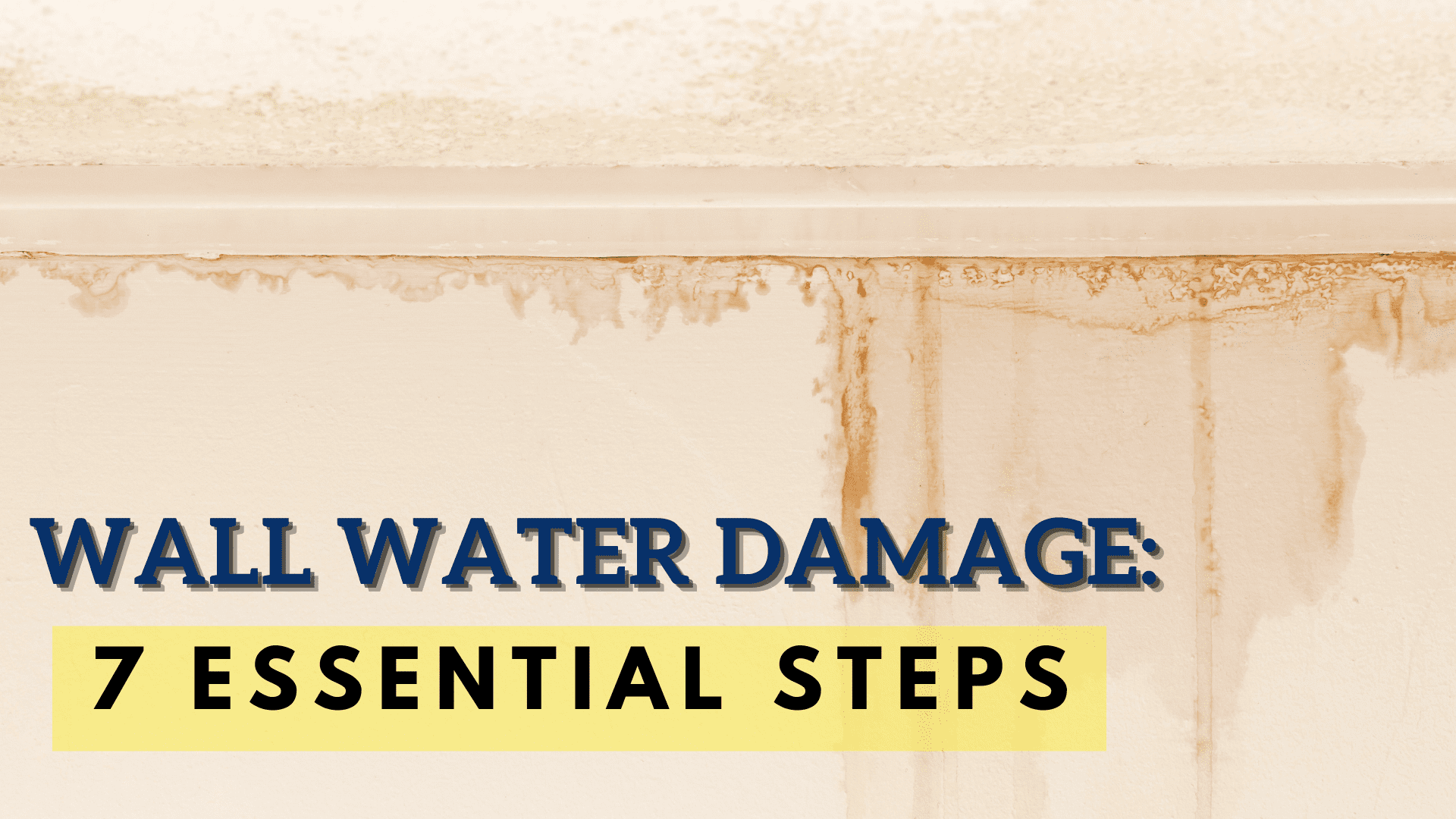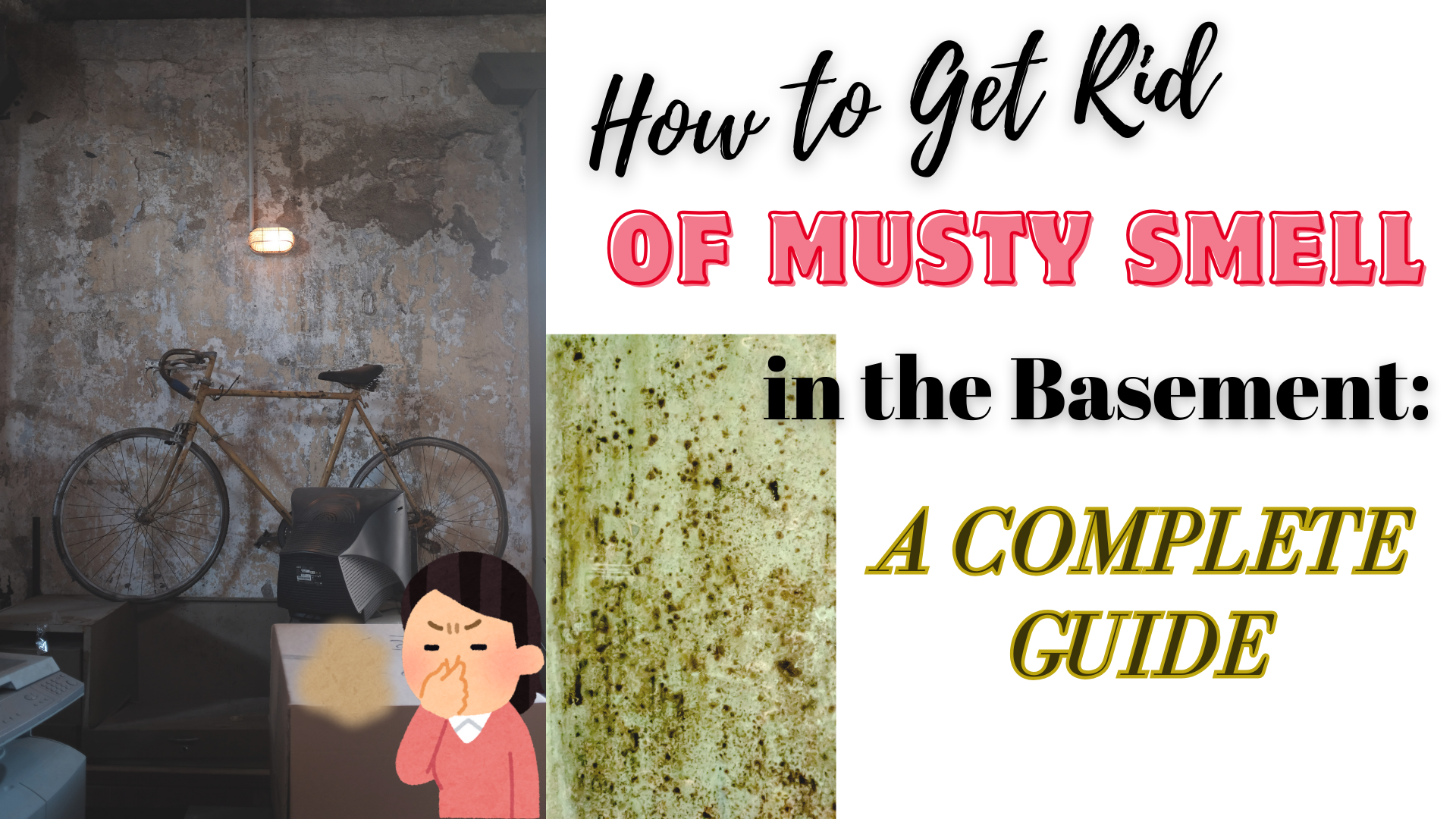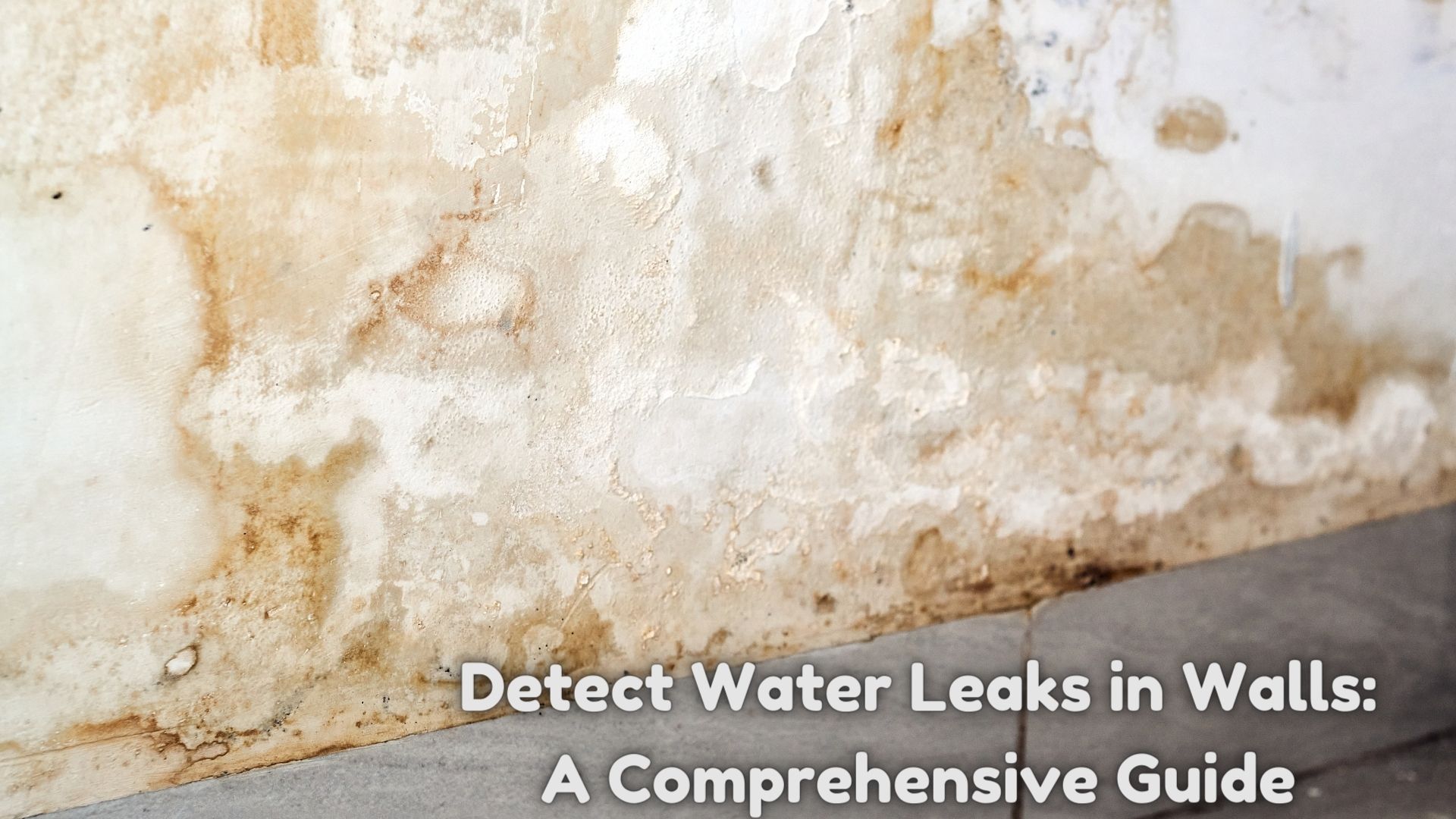Water damage is a homeowner's worst nightmare, and it can happen when you least expect it. Whether it's a burst pipe, a leaky roof, or a faulty appliance, water damage can wreak havoc on your property and lead to costly repairs if not addressed promptly. If you're facing wall water damage in your home in Corona, Murrieta, or Riverside, it's crucial to know who to call for help. In this blog post, we'll guide you through the steps to take and the specialist to contact when you're dealing with water damage in your walls.
Step 1: Assess the Situation
Water damage can manifest in various forms, and it's crucial to understand the signs and types of water damage before taking any action.
Signs of Wall Water Damage
Water damage can be subtle or glaringly obvious, depending on its severity. Common signs of water damage in walls include:
- Discolored or swollen drywall: This is often the first visible sign of water damage. Drywall can become discolored, warped, or bubbled when exposed to water.
- Peeling paint or wallpaper: Water can cause paint and wallpaper to peel away from the surface.
- Musty odor: A persistent musty or damp smell can indicate the presence of mold or mildew, which often accompanies water damage.
- Stains and watermarks: Watermarks or stains on walls and ceilings are clear indicators of water intrusion.
Different Types of Water Damage
Understanding the source and category of water damage is essential for effective mitigation. Water damage can be categorized into three main types:
- Clean Water Damage (Category 1): This type of water damage results from clean water sources, such as a broken water supply line, sink overflow, or rainwater. It poses the least immediate health risk.
- Graywater Damage (Category 2): Graywater contains some contaminants that may arise from washing machines, dishwashers, or sump pump failures. It can potentially cause discomfort or sickness if ingested.
- Blackwater Damage (Category 3): Blackwater is highly contaminated and can come from sewage backups, floodwaters, or standing water that has developed microbial growth. It poses significant health risks.
The Importance of Prompt Assessment
The severity of the damage will determine the course of action you need to take. Regardless of the type or extent of the damage, it's crucial to act swiftly. Delaying the assessment and remediation process can lead to further structural damage, mold growth, and increased repair costs.
Step 2: Immediate Actions to Take
Once you've assessed the situation, there are immediate actions you should take to prevent further damage and ensure your safety.
Turning Off the Water Source
If the water damage is due to a plumbing issue, such as a burst pipe or a leaking appliance, it's essential to turn off the water source to prevent further water from entering your home. Locate your home's main water shut-off valve and turn it off immediately. In some cases, you may also need to shut off electricity to the affected area if there's a risk of electrical hazards.
Safety Precautions
Prioritizing safety is paramount when addressing water damage. Please take into account these safety precautions:
- Avoid entering rooms with significant water damage if there's a risk of structural instability.
- In cases of standing water or exposed electrical outlets, it is essential to deactivate power to the impacted zones.
- Be cautious of slippery surfaces and take steps to prevent slips and falls.
- Use protective gear, such as gloves and masks, when handling water-damaged materials.
Calling Your Insurance Company
It's a good idea to report the water damage to your homeowner's insurance company as soon as possible. They can guide you through the claims process and help determine if the damage is covered under your policy. It's essential to provide them with accurate information and any documentation you've collected regarding the damage.
Step 3: Documenting the Damage
Proper documentation of the water damage is essential for several reasons:
- Insurance Claims: Clear documentation can help support your claim and ensure you receive the compensation you're entitled to.
- Assessment and Restoration: Restoration professionals will use your documentation to assess the extent of the damage and plan the restoration process effectively.
- Legal Purposes: In some cases, documentation may be required for legal purposes, such as disputes with contractors or insurance companies.
How to Properly Document Water Damage
Here's how to document water damage effectively:
- Photographs and Videos: Take clear, high-resolution photographs and videos of the affected areas from multiple angles. Capture close-up shots highlighting specific damage, such as soaked drywall or flooring.
- Written Descriptions: Provide written descriptions of the damage, including the date and time. Include details about the source of the water damage if known.
- Inventory Damaged Items: Create a list of items damaged or affected by the water. Include their approximate value and any receipts or purchase records if available.
- Keep Records: Maintain a record of all communications related to the water damage, including emails, phone calls, and letters exchanged with your insurance company, contractors, and other relevant parties.
- Preserve Samples: If possible, save samples of damaged materials, such as soaked drywall or flooring. These can serve as physical evidence if needed.
Remember that thorough documentation can significantly streamline the insurance claims process and ensure that all aspects of the damage are considered during restoration.
Step 4: Calling a Water Damage Restoration Company
When it comes to water damage to your walls, it's crucial to enlist the help of professionals who specialize in water damage restoration. These experts have the knowledge, experience, and equipment to assess the damage, extract excess water, and restore your property to its pre-damage condition.
In Corona, Murrieta, and Riverside, there is a reputable water damage restoration company that you can call for assistance – Superior Restoration.
- They offer 24/7 emergency water damage restoration services and are known for their prompt response and efficient restoration work.
- This company has a team of certified professionals skilled in handling all types of water damage situations, including wall damage.
- They provide comprehensive water damage restoration services and are dedicated to helping homeowners recover from water-related disasters.
When deciding on a water damage restoration company, take into account the following factors:
- Certifications and Training: Ensure the company's technicians are certified in water damage restoration and have received proper training.
- Reputation: Review previous customer testimonials to gauge the company's reputation for quality work and customer service.
- Response Time: During emergencies, prompt response time is paramount. Choose a company that offers 24/7 emergency services.
- Equipment and Technology: The latest equipment and technology can expedite restoration and improve results.
- Insurance Coverage: Check if the restoration company works with insurance companies to simplify the claims process.
Step 5: The Water Damage Restoration Process
The water damage restoration process involves several key steps to ensure that your property is thoroughly cleaned and restored. Here's an overview of what you can expect:
Assessment and Inspection:
- Professionals will evaluate the damage's scope and pinpoint the water infiltration's origin.
- To create a comprehensive restoration plan, moisture levels in walls, flooring, and other affected areas will be measured.
Water Extraction:
- Excess water will be removed using specialized equipment like pumps and dehumidifiers.
- Damaged materials like carpeting or drywall may be removed to facilitate drying.
Drying and Dehumidification:
- High-powered fans and dehumidifiers will dry out the affected areas completely.
- Monitoring of moisture levels will continue to ensure thorough drying.
Cleaning and Sanitizing:
- Surfaces and materials will be cleaned, sanitized, and deodorized to prevent mold growth and eliminate odors.
- Restoration professionals will use specialized cleaning agents and techniques to restore water-damaged items.
Restoration and Repair:
- The final step involves repairing and restoring your home's structural and aesthetic components.
- This may include replacing drywall, flooring, and insulation and repainting affected areas to match the original appearance.
Throughout the restoration process, professionals will keep you informed of progress and any additional steps that may be required. Their goal is to return your home to a safe and habitable condition.
Step 6: Dealing with Insurance
Filing an insurance claim for water damage can be a complex process. Here are some important steps to navigate this aspect effectively:
Filing an Insurance Claim:
- Contact your insurance company promptly to report the water damage and initiate the claims process.
- Provide all necessary information, including damage documentation and a detailed description of the incident.
Working with Adjusters:
- An insurance adjuster will assess the damage and determine the compensation you're eligible to receive.
- Be present during the adjuster's inspection to ensure all damage is properly documented.
Understanding Coverage:
- Review your insurance policy to understand what types of water damage are covered and any limits or exclusions that may apply.
- Keep records of all communications with your insurance company, including claim numbers and the names of representatives you speak with.
It's essential to be patient and persistent when dealing with insurance companies. If you encounter challenges or disputes, consider seeking guidance from a public adjuster or legal counsel to protect your interests.
Step 7: Preventing Future Water Damage
Preventing future water damage is crucial to safeguarding your home and avoiding costly repairs. Here are some proactive steps you can take:
Regular Maintenance:
- Schedule routine maintenance for your plumbing, including inspections of pipes, faucets, and water heaters.
- Clean gutters and downspouts to ensure proper drainage and prevent roof leaks.
Home Improvement Projects:
- Consider home improvement projects that can enhance water resistance, such as adding waterproof barriers to basements or installing impact-resistant roofing materials.
Installing Water Detection Systems:
- Invest in water detection systems that alert you to leaks or flooding in real time, allowing for the quick action and damage mitigation.
- Place water sensors near appliances, water heaters, and areas prone to water damage, such as basements.
- Some smart home systems can automatically shut off the main water supply if a leak is detected.
Taking these preventative measures can significantly reduce the risk of future water damage and its associated costs.
Conclusion
Dealing with water damage in your walls can be a challenging and stressful experience, but knowing who to call for help and taking the right steps can make the process smoother and more efficient. From assessing the damage and documenting it to enlisting the services of a reputable water damage restoration company and working with your insurance company, each step is crucial to ensuring a successful recovery.
Acting quickly is key to preventing further damage and reducing repair costs. By staying informed and proactive, you can protect your home and investment from the devastating effects of water damage in Corona, Murrieta, and Riverside.




